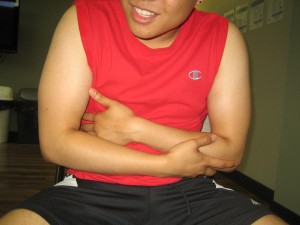Radiation enteritis is known to cause the loss of both intestinal tissues and cells. The condition is brought about by inflammation of the small and/or large intestine due to radiation treatment in the stomach, rectum or reproductive organs.
Take note that there are 2 forms of radiation enteritis – acute and chronic. The acute form arises while under radiation treatment. The condition can last up to 8 weeks after the last radiation treatment. The chronic form can trigger symptoms lasting for months to years after completing radiation treatment.
What are the signs?
The usual indications of radiation enteritis include:
- Nausea and vomiting
- Watery diarrhea
The acute form arises while under radiation treatment. The condition can last up to 8 weeks after the last radiation treatment. - Stomach cramps
- Frequent urge to use the bathroom
- Rectal pain
- Mucous drainage from the rectum
- Rectal bleeding
- Weight loss
- Wave-like stomach pain
Management of radiation enteritis
Some of the commonly used treatment options include:
- Steroids
- Anti-diarrheal medications
- Potent pain medications such as hydrocodone
- Lactose-free and low-fat diet
- Antibiotics to deal with excess bacteria inside the intestines
The doctors might also suggest dietary changes that can lessen the disruption in the digestive tract.
Foods to avoid
- Whole wheat bread
- Dairy products
- Nuts
- Greasy foods
- Seeds
- Raw vegetables
- Coffee
- Chocolate
- Strong herbs and spices
- Alcohol
- Tobacco products
Foods to include in the diet
- Chicken
- Fish
- Eggs
- Bananas
- White bread
- Applesauce
- Macaroni
- Potatoes
- Apple and grape juices
- Mildly cooked vegetables
What is the outlook?
In most cases, radiation enteritis can be managed with dietary changes alone. Nevertheless, if there is significant damage to the intestines, a procedure is required, specifically intestinal bypass surgery.
During this procedure, the damaged regions of the intestines are removed, and the healthy parts are connected.

